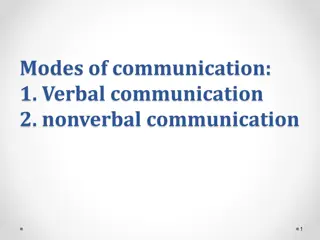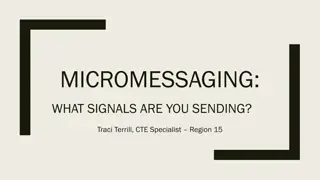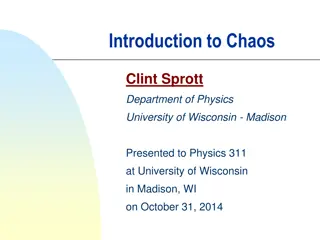Using Chaos to Send Secret Messages
Chaos is a fundamental concept in creating secret messaging systems using deterministic systems with sensitive initial conditions. By implementing chaotic behavior in electrical circuits known as the "Talker" and "Copycat," messages can be encoded and decoded based on chaotic attractors and synchronization patterns.
Download Presentation

Please find below an Image/Link to download the presentation.
The content on the website is provided AS IS for your information and personal use only. It may not be sold, licensed, or shared on other websites without obtaining consent from the author.If you encounter any issues during the download, it is possible that the publisher has removed the file from their server.
You are allowed to download the files provided on this website for personal or commercial use, subject to the condition that they are used lawfully. All files are the property of their respective owners.
The content on the website is provided AS IS for your information and personal use only. It may not be sold, licensed, or shared on other websites without obtaining consent from the author.
E N D
Presentation Transcript
Using Chaos to Send Secret Messages By Nate Finger
Chaos Chaos is aperiodic long-term behavior in a deterministic system that exhibits sensitive dependence on initial conditions. In other words, it describes a system, which does not settle down to any fixed points or trajectories, has no random inputs or parameters, and its trajectories separate exponentially fast.
Lorenz Chaotic Attractor Figure 1. A solution to the Lorenz equations with initial conditions (x, y, z) = (0, 1, 0), found by numerical integration. The solutions (called trajectories) alternate irregularly between the wings of the attractor without ever intersecting themselves or one another.
The system is defined by the following nonlinear differential equations:
The variables x, y, z make up the state of the system at each instant in time In order to implement this system, the two gentlemen Pecora and Caroll built an electrical circuit to model its behavior. Lets call the circuit the Talker (T).
The circuit T generates its output voltage signals (Xt, Yt, Zt) according to the Lorenz equations:
Next, an almost identical circuit is built as a second chaotic system called the Copycat with output (Xc, Yc, Zc). The key difference between the Talker and the Copycat is that the output Xc is replaced with the signal Xt where it feeds into the parts that generate Yc and Zc
These equations, which determine the state of the Copycat now depend on Xt In this situation, T and C are called synchronized and the outputs (Xc, Yc, Zc) are approximations of (Xt, Yt, Zt). Even though the Copycat circuit is only getting partial information about the state of the Talker, all of the Copycat outputs will synchronize with the Talker circuit outputs
Encryption Armed with this knowledge on,e of Strogatz s students Kevin Cuomo realized the potential for chaotic synchronization even when using an input signal besides Xt. He began with the same system as before, Talker (Xt, Yt, Zt) and Receiver (Xr, Yr, Zr) and a message m(t) that he wanted to send secretly.
First, we create a new signal: S(t) = m(t)+Xt by adding the message to the output of the Talker When this is fed through the receiver we are going to recover the same state as the talker.
The Receiver is governed by the set of equations:
As we saw before the outputs of the receiver are approximations of the Talker so: Xr~Xt and m(t)= S(t)-Xt => M(t)=S(t)-Xr~m(t) This means that when we feed our message through the talker it gets added to the output of the talker circuit. This combined output is now the input for the receiver circuit, which cancels out the chaotic term and leaves an approximation of the original message.
Next Ill show how the Chaos is eliminated. We use a Lyapunov function, which is a continuously differentiable, real-valued function f where all trajectories flow downhill towards a stable fixed point regardless of initial conditions. So for our system we show that the error system approaches 0:
Chaos Mask Demonstration https://www.youtube.com/watch?v=59Gijau_ xyM























